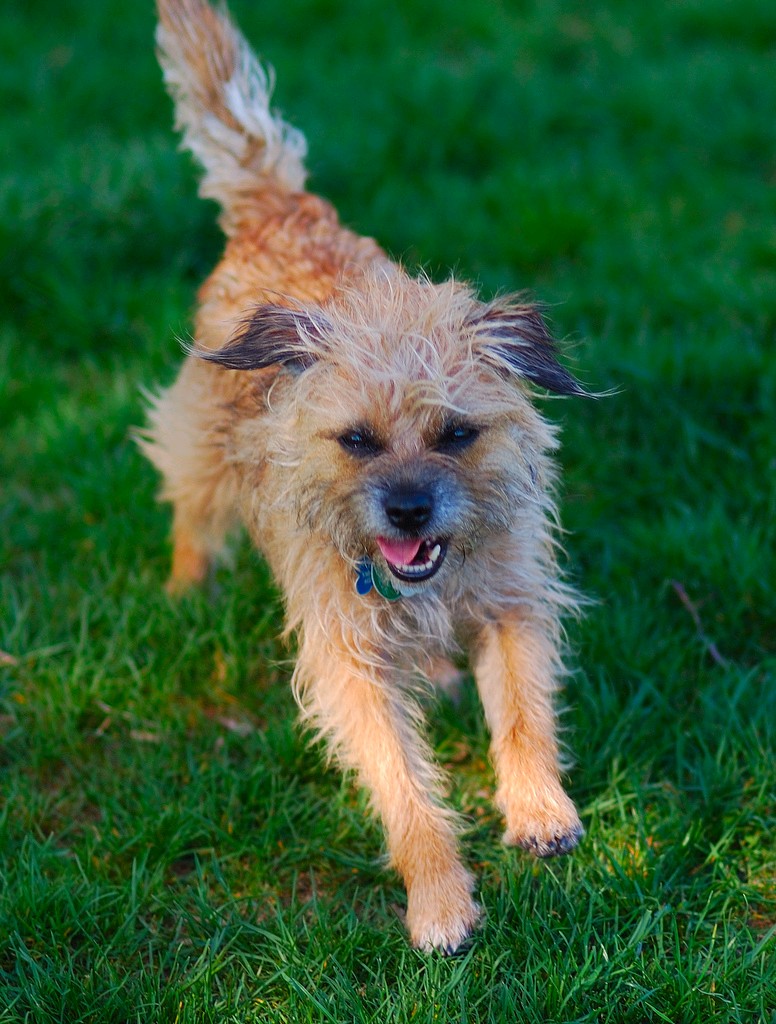
The Border Terrier was originally bred in the Cheviot Hills area near the border between England and Scotland to help farmers drive predatory foxes from their dens and kill them. This sturdy little fellow has long enough legs and enough stamina to keep up with a horse, even though he is quite small. The bold little Border Terrier has also been used to hunt marten, otter and the fierce badger. As with most terriers, the Border Terrier gradually began to be taken into the home. Today due to his winning personality, adaptability and friendliness, the breed is highly esteemed as a companion dog, yet he can still serve as a fine farm dog, helping to control vermin. The Border Terrier was officially recognized by the British Kennel Club in 1920 and by the AKC in 1930. Some of the Border Terrier's talents include: hunting, tracking, watchdogging, agility, competitive obedience, and performing tricks.
The Border Terrier is small spunky terrier with a coarse, wiry double coat. He has dark lively eyes, a short muzzle, black nose and small ears, which fold forward into a "V" shape. The jaw should meet in a scissors bite. The tail is relatively short and tapers from a thicker base to the tip. It is carried level with the back unless the dog is very excited. Its limbs are not heavily boned. The Border Terrier comes in red, blue & tan, tan, and grizzle & tan. White on the feet is not allowed, but small patches of white are permissible on the chest.
The Border Terrier is alert and lively, but mild-mannered. Especially affectionate with children and wants to please, so it is relatively easy to train. A hardy, scruffy little terrier and a bold hunter. Socialize them well and get puppies accustomed to loud noises and city situations while they are still young to avoid excessive timidity. It will bark, but it is not aggressive. They might even go home with a burglar! Puppies are very active, but they will mellow as an adult. Border Terriers like to dig and must be securely fenced in. Many owners use free-standing dog runs or additional reinforcements along the bottom of their fences. They may get themselves stuck in tight holes, though they can usually wiggle their way out. They are not trustworthy with hamsters, rabbits, rats or birds, but will generally get along with other dogs. If the puppy is raised with cats, family cats will not generally be a problem. The dog shouldn't be trusted with other people's cats however. If you have two Border Terriers, it is best to have a male and a female. This breed does not do well when left alone all day. They are economical to feed, for they will thrive on a cup of dry dog food per day.
border terrier dog
Labels:
AKC terrier,
border terrier dog,
dogs,
pets
Subscribe to:
Comments (Atom)